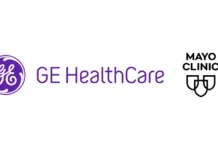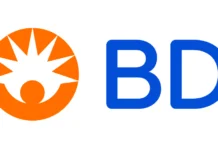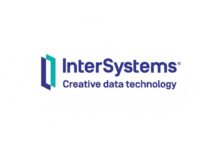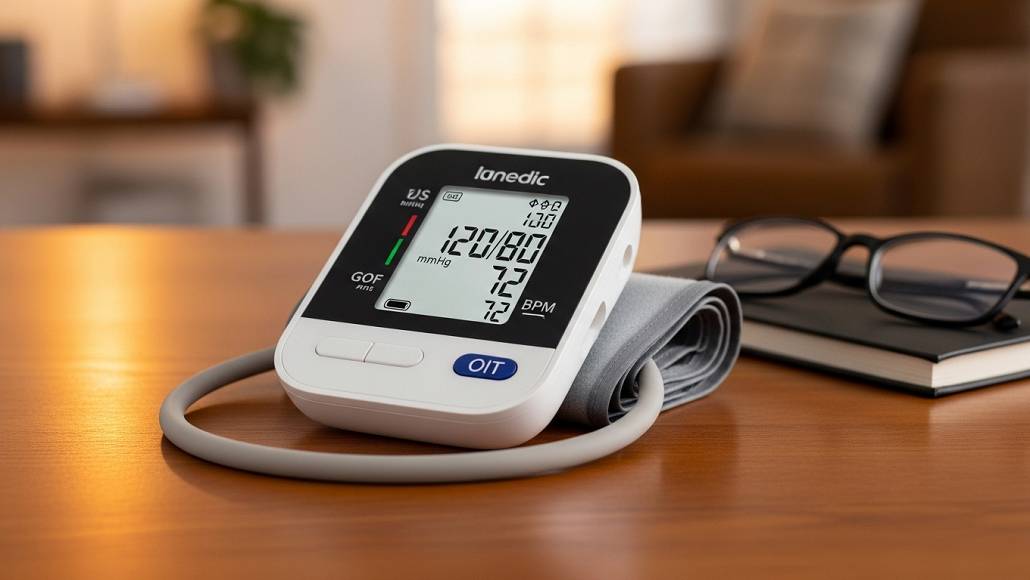The global healthcare industry is undergoing a profound digital transformation, and at the heart of this revolution lies the rapid adoption of smart medical devices. The global smart medical devices market is projected to more than double from $87.7 billion in 2025 to $193.3 billion by 2030, the market is expected to grow at a robust compound annual growth rate (CAGR) of 17.1% over this period. This growth is propelled by technological innovation, rising chronic disease prevalence, and increasing demand for connected and remote healthcare solutions worldwide.
These next-generation medical tools, which integrate advanced sensors, wireless connectivity, artificial intelligence, and real-time analytics, are redefining how care is delivered, monitored, and personalised. Smart medical devices, ranging from wearable fitness trackers that detect irregular heart rhythms to implantable devices that transmit critical health data directly to physicians, are transforming the relationship between patients and providers in unprecedented ways.
This surge is fuelling a vibrant global market projected to nearly triple in value over the next five years, reshaping not only medical technology innovation but also the very fabric of healthcare delivery.
Market Overview and Forecast
Smart medical devices encompass a broad range of products equipped with advanced sensors, embedded software, connectivity, and data analytics capabilities. These devices include implantable, wearable, and non-wearable medical instruments used across cardiovascular health, diabetes management, neurology, and sleep disorder applications. Their ability to collect and transmit real-time health data supports improved clinical outcomes, personalized care plans, and preventive medicine, reducing hospital admissions and healthcare costs.
The global market size, estimated at $87.7 billion in 2025, is forecast to nearly triple to $193.3 billion by 2030. This reflects a CAGR of 17.1%, highlighting strong industry momentum and expanding adoption across all regions, including North America, Europe, Asia-Pacific, South America, and the Middle East and Africa. Among these, North America currently dominates the market, supported by robust healthcare infrastructure, regulatory support for medical technology innovation, and substantial government initiatives promoting connected care devices.
Segmentation by Product Type and Applications
The smart medical devices category segments primarily into implantable devices (such as cardiac monitors and neurostimulators), wearable devices (like continuous glucose monitors and fitness trackers), and non-wearable devices (including remote patient monitoring systems and smart diagnostic tools). Wearable devices are among the fastest-growing segments due to increased consumer health awareness and advancements in miniaturisation, battery life, and wireless connectivity.
Applications span critical healthcare fields, including:

- Cardiovascular health: Devices continuously monitor heart rate, rhythm, and blood pressure, aiding early detection and management of cardiovascular diseases.
- Diabetes management: Continuous glucose monitoring systems offer real-time insights that transform patient self-care and clinical interventions.
- Neurology: Smart devices enable remote brain activity tracking and management of conditions such as epilepsy and Parkinson’s disease.
- Sleep disorders: Wearables and other non-invasive devices help diagnose and monitor sleep apnea and related conditions.
Growth Drivers
Several key factors contribute to the market’s strong growth trajectory:
- Chronic Disease Burden: The global rise in chronic conditions such as diabetes, cardiovascular diseases, and respiratory illnesses has created a pressing need for continuous, remote monitoring solutions.
- Technological Innovation: Integration of artificial intelligence (AI), the Internet of Things (IoT), and cloud computing into medical devices enhances diagnostic accuracy, personalisation of treatments, and remote patient management.
- Aging Population: The worldwide increase in the elderly population intensifies demand for chronic care management and assistive medical technologies.
- Telehealth Expansion: The accelerated adoption of telemedicine, especially post-pandemic, boosts demand for remote monitoring devices that facilitate care delivery outside traditional clinical settings.
- Regulatory Support: Favorable regulatory frameworks in major markets encourage rapid introduction and uptake of innovative smart medical devices.
Technological Trends and Innovations
The industry is characterised by rapid technological advances that improve device functionality, usability, and data integration: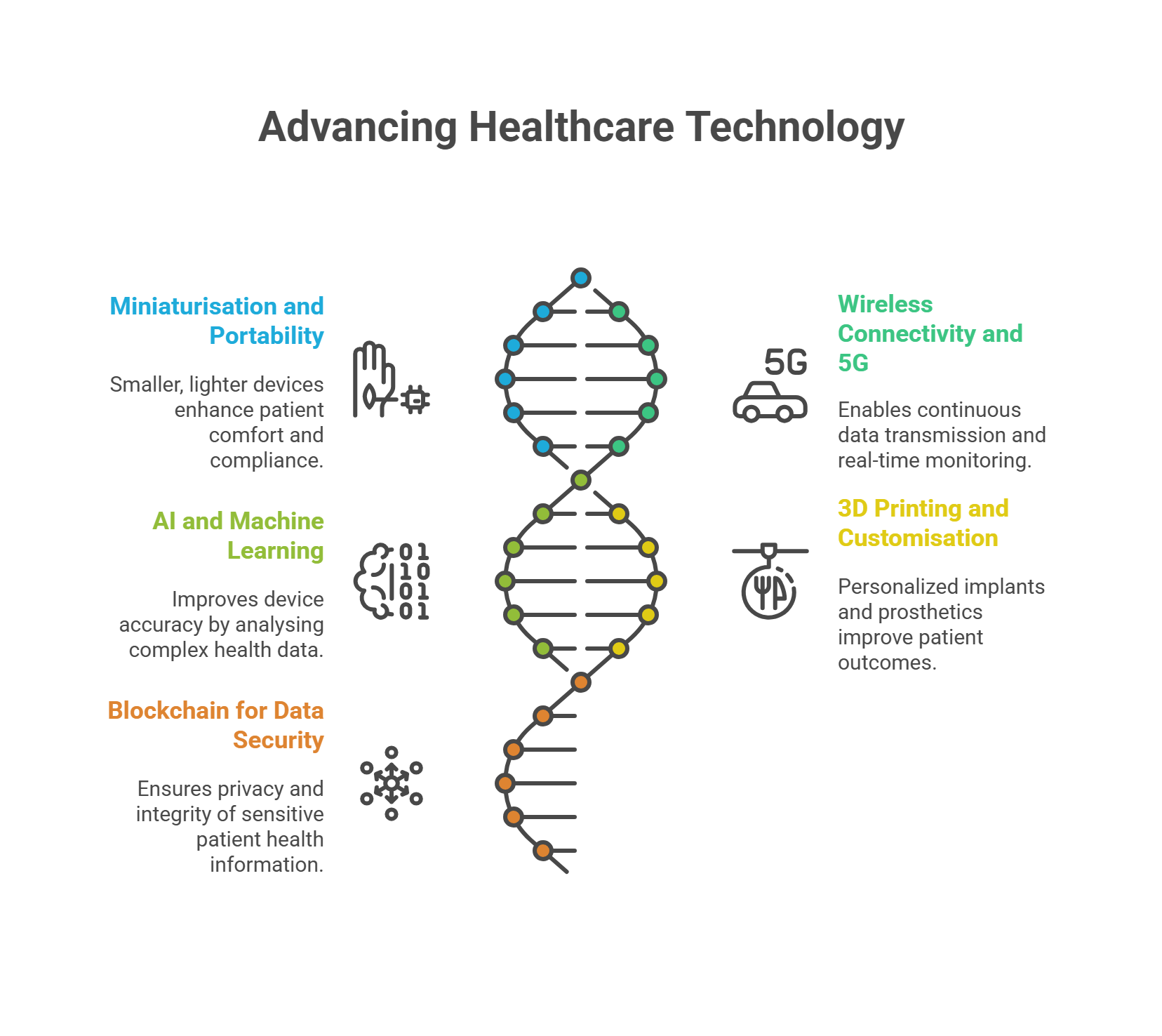
- Miniaturisation and Portability: Smaller, lightweight devices enhance patient comfort and compliance.
- Wireless Connectivity and 5G: Enable continuous data transmission and real-time monitoring, crucial for emergency response and chronic disease management.
- AI and Machine Learning: These tools improve device accuracy by analysing complex health data, predicting adverse events, and optimising treatment plans.
- 3D Printing and Customisation: Personalised implants and prosthetics made via 3D printing improve patient outcomes with tailored medical solutions.
- Blockchain for Data Security: Ensures privacy and integrity of sensitive patient health information transmitted through connected devices.
Competitive Landscape
The smart medical devices market is moderately concentrated among several leading multinational companies and innovative startups. Key players include Medtronic, Abbott Laboratories, Boston Scientific Corporation, F. Hoffmann-La Roche Ltd., and Koninklijke Philips N.V. These companies leverage proprietary technologies, extensive R&D, and strategic alliances to maintain competitive advantages and expand product offerings. Additionally, technology firms like Apple, Fitbit, and Garmin have made significant inroads into the market by introducing consumer-friendly wearable health devices with medical-grade capabilities.
Regional Insights
- North America: The largest market share due to advanced healthcare infrastructure, higher spending on medical technologies, and strong innovation ecosystems.
- Europe: Steady growth supported by government funding for digital health and aging population dynamics.
- Asia-Pacific: The fastest-growing region, propelled by increasing healthcare investments, rising chronic disease prevalence, and growing awareness of smart health solutions.
- South America and Middle East & Africa: Emerging markets exhibiting growth as access to healthcare technologies improves and telemedicine gains popularity.
Market Challenges and Opportunities
Challenges include regulatory complexities across different regions, data privacy concerns, and high initial costs of advanced smart medical devices. However, these are offset by opportunities in expanding remote patient monitoring, personalized medicine, and healthcare digitisation.
The ongoing pandemic-induced shift towards decentralised healthcare models and value-based care supports unprecedented demand for intelligent medical devices that reduce clinical burdens and enhance patient engagement.
Conclusion
The smart medical devices market represents a dynamic and high-growth sector poised to revolutionise global healthcare. With market value expected to reach nearly $200 billion by 2030, driven by innovation and increasing healthcare needs, stakeholders from healthcare providers to device manufacturers have significant opportunities. Strategic investments in technology, partnerships, and regulatory compliance will be critical for capitalising on this expanding landscape, ultimately transforming patient care, improving health outcomes, and lowering overall healthcare costs.
In summary, smart medical devices are not just technological instruments but are pivotal enablers of modern, connected, and patient-centric healthcare ecosystems globally. Their continued evolution promises to bring precision medicine and real-time health management to the forefront of medical practice.







